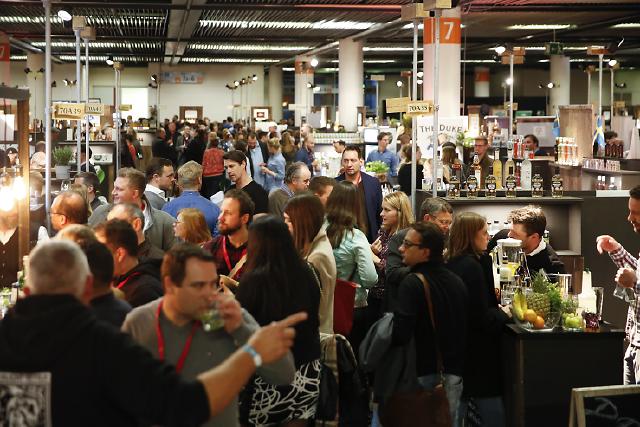This website uses cookies so that we can provide you with the best user experience possible. Cookie information is stored in your browser and performs functions such as recognising you when you return to our website and helping our team to understand which sections of the website you find most interesting and useful.
How new drinks options are transforming the industry
In an article from Paula Redes Sidore and Stuart Pigott for ProWein 2022, the pair note the increasingly “blurred lines” behind consumer choices.

The success of ProWein’s “Same but Different” Hall in recent years is a testament to growing interest in hybrid drinks, from hard seltzers to alcohol-free. The former has certainly exploded in popularity, particular in the US where the IWSR estimated in July 2021 almost 300 new hard seltzer brands had been launched in the previous year.
Redes Sidore and Pigott point out that though White Claw is the dominant name in this field today, the success of Zima in the 90s paved the way. Hard seltzers are on the rise supposedly because the low sugar, gluten free drinks appeal “to millennials and even younger consumers who are interested in low alcohol, health consciousness, and transparent ingredient labelling.”
What they might be overlooking is that hard seltzer also possesses the twin pillars of any beverage enjoyed by young consumers who may be relatively new to alcohol: affordability and easiness to drink.
Low/zero alcohol options have been gaining steam too. Though 2020, according to IWSR analysis, saw a 2% rise in drinks consumption, a major part of that was down to a greater number of sales of drinks with a reduced ABV. In 2021, the low/zero alcohol market was worth an estimated USD$10 billion, up USD$2.2 billion from the 2018 level. Producers have been forced to take notice and give these options the same attention that they do to regular drinks.
Co-ferments are also drawing considerable attention, with further experimentation on which grape varieties work with which beer bases taking place. This spirit of innovation is chiefly attributed to areas beyond fine wine, where tradition might be seen as an obstacle to development.
Social media might partially explain the socio-cultural change, with users eager to show something different from the norm to their followers. Drinks deemed unique and unusual stand out to “modern consumers [who] embrace exploration over exclusivity.”
The shift in drinking habits between generations has been noticed by the industry. “Companies [are] no longer selling products to groups of consumers, but selling products that fit particular consumption occasions.” For example, Asahi recently invested EUR€20 million into the launch of Peroni Nastro Azzurro 0.0% and Coca-Cola and Molson Coors collaborated on a spiked lemonade.
Such a radical change in thinking might appear like a panicked effort to attempt to secure an increasingly loosely aligned customer base. But, the blurring of these lines presents big business with new opportunities for expansion. As consumer acceptance for these new options grows, companies have willingly diversified to gain their share of sales growth.
Redes Sidore and Pigott will be speaking further on this phenomeonon at the 2022 ProWein Trend Hour Tasting on 15 and 16 May from 17:00 – 18:00 in room 14, hall 1 (“first come first serve”).

